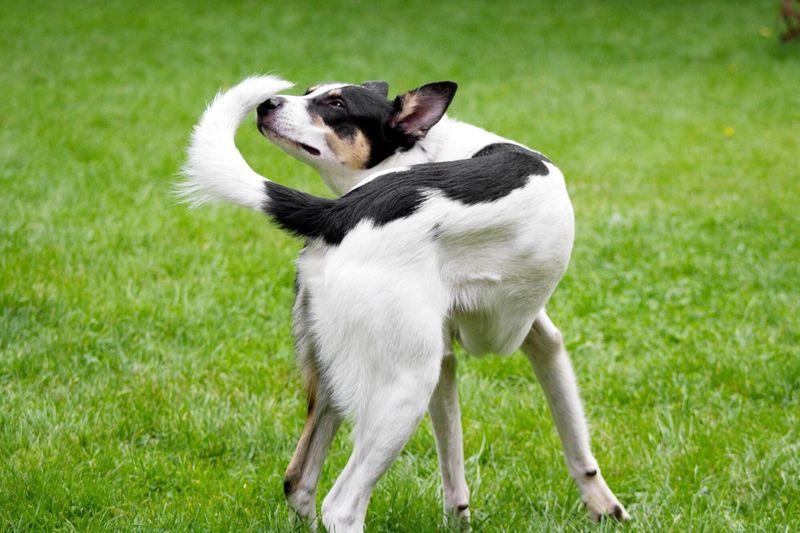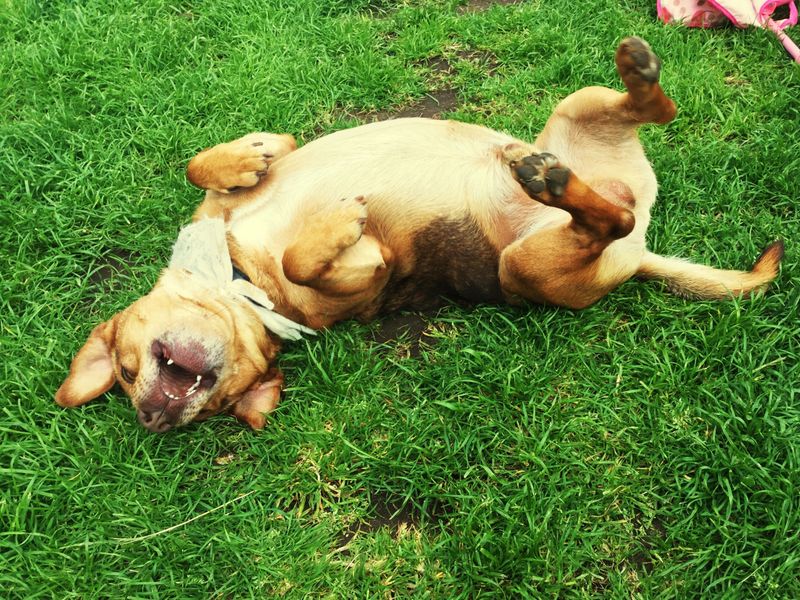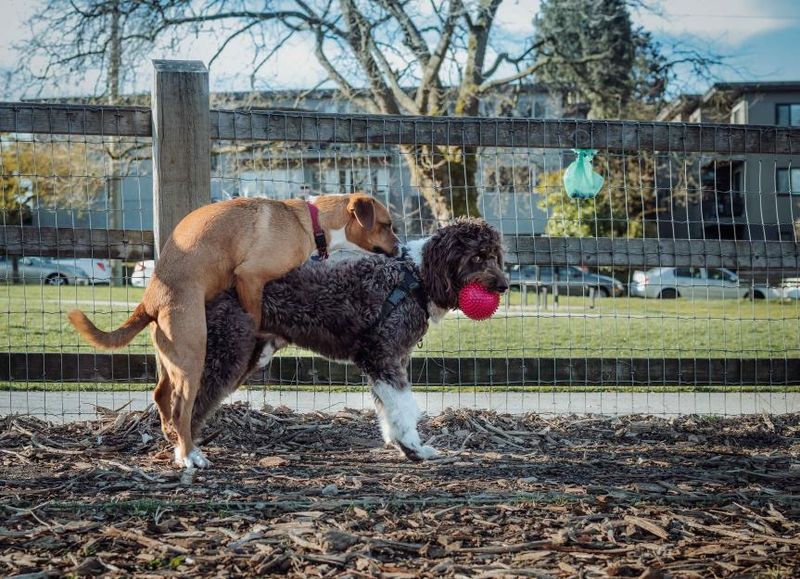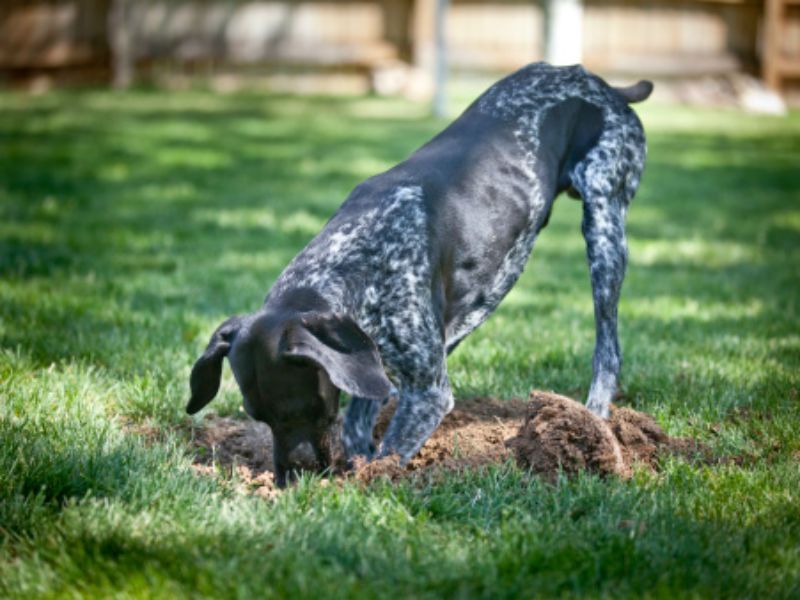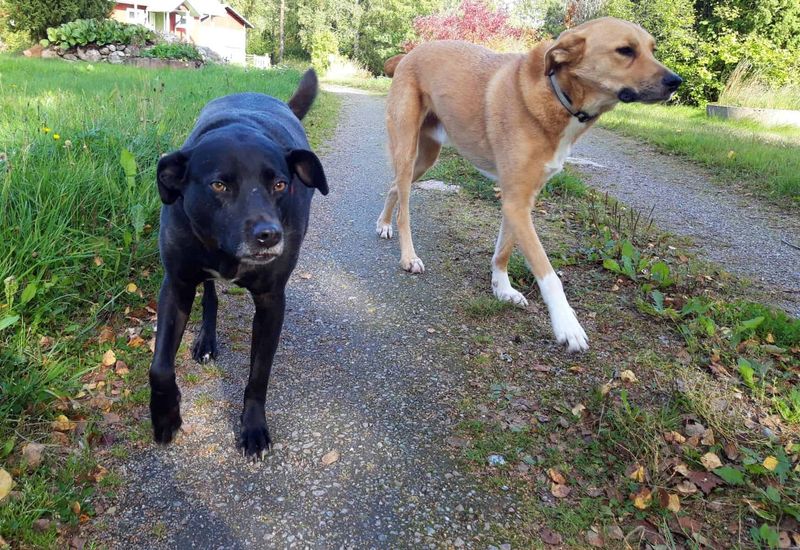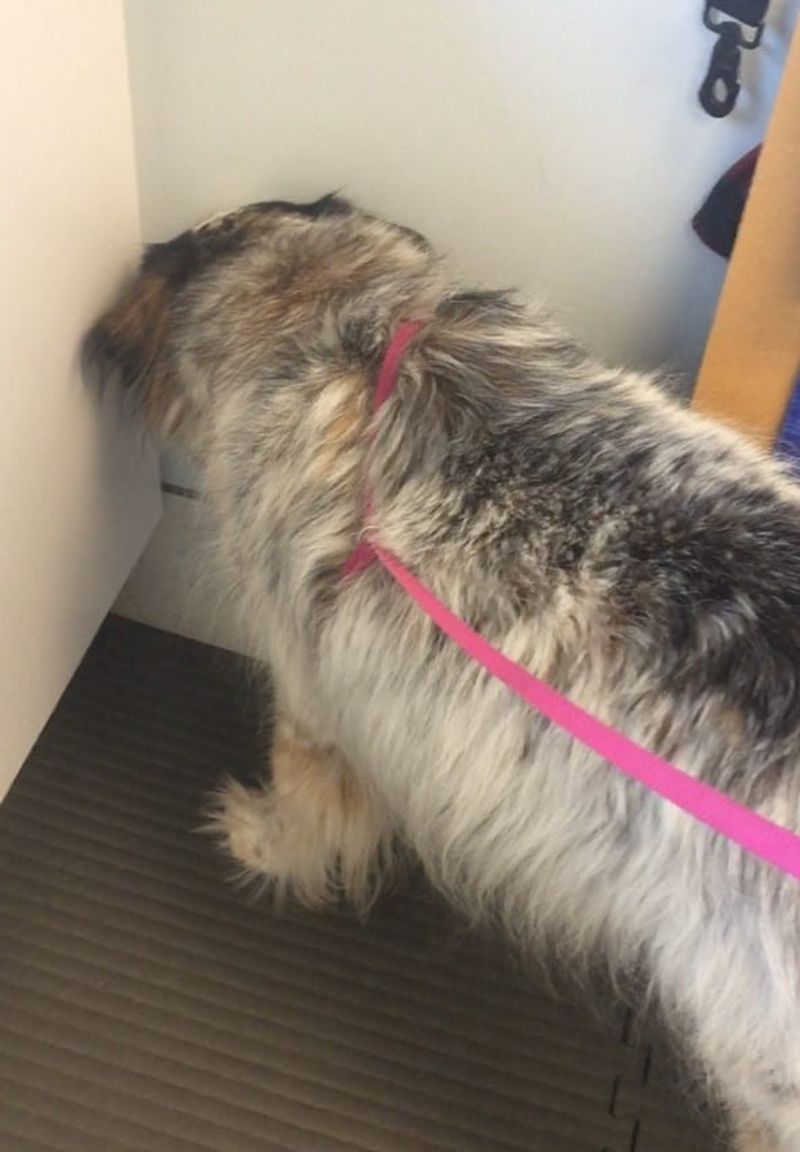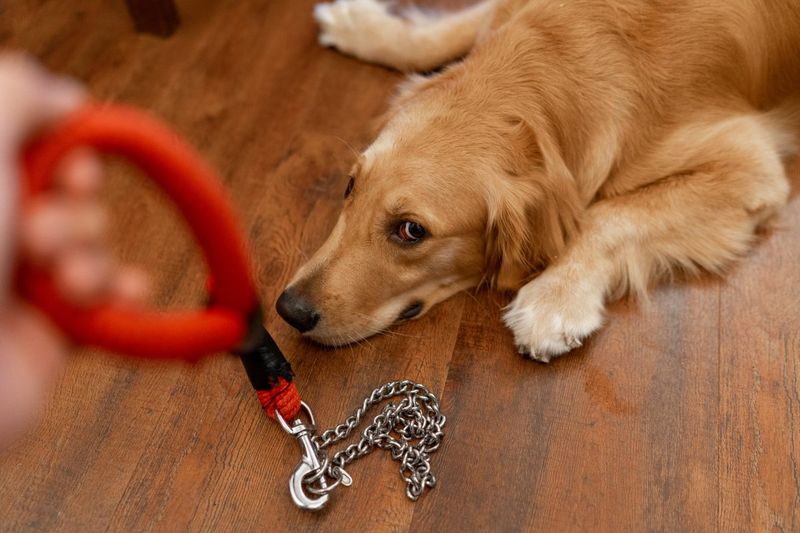Dogs exhibit a wide range of behaviors that can be both adorable and perplexing. While many actions are harmless, certain cute behaviors can indicate underlying issues. Understanding these signs can help ensure your canine companion’s health and happiness. Here are 20 dog behaviors that may seem endearing but could signal a deeper problem.
Excessive Licking
A dog licking its paws might seem like routine grooming, but excessive licking can indicate problems. It could be a sign of anxiety, allergies, or even pain. Dogs often lick to soothe themselves, especially when they feel stressed or uncomfortable. This behavior, though cute, warrants a closer look.
The underlying issue could range from environmental allergies to a compulsive disorder. Observing the frequency and context of the licking can provide clues. If the behavior persists, consulting with a veterinarian is advisable to identify any potential health concerns.
Tail Chasing
Chasing the tail is often viewed as a playful activity. However, when done frequently, it may suggest boredom or an underlying medical condition. Dogs may chase their tails due to flea allergies, anal gland issues, or neurological problems.
It’s essential to differentiate between occasional playful chasing and constant, obsessive behavior. If your dog seems fixated on its tail, a veterinary check-up is recommended. Addressing this behavior early can prevent it from becoming compulsive, ensuring your dog’s well-being.
Excessive Barking
Barking is a natural form of communication, but excessive barking can be bothersome and indicate distress. It might signal anxiety, fear, or territorial behavior. Dogs may also bark excessively if they’re not getting enough physical or mental stimulation.
Understanding the triggers for excessive barking is crucial. Is it a response to strangers, noises, or boredom? Identifying the cause will help in managing the behavior effectively. Consistent training and providing engaging activities can reduce unnecessary barking.
Eating Non-Food Items
Dogs are known for their curious nature, often exploring the world with their mouths. However, if your dog consistently eats non-food items, it could indicate a condition known as pica. This behavior might be linked to nutritional deficiencies, anxiety, or boredom.
Ingesting non-food items can be dangerous, leading to intestinal blockages or poisoning. It’s essential to monitor your dog’s environment and offer appropriate chew toys. Veterinary advice can help determine if dietary changes or behavioral interventions are required.
Constant Whining
Whining is a common way for dogs to express their needs or discomfort. Constant whining, however, may indicate anxiety or pain. It can also be a learned behavior, with dogs realizing it gets attention or rewards.
Understanding the context is key. Is your dog whining for food, attention, or due to a specific trigger? Seeking professional advice can help decipher these signals and address any underlying issues, ensuring your dog feels secure and content.
Aggressive Chewing
Chewing is a natural instinct for dogs, aiding in dental health and stress relief. However, aggressive chewing on inappropriate objects can indicate anxiety, lack of exercise, or teething pain in puppies.
Distinguishing between healthy chewing and problematic behavior is vital. Providing suitable chew toys and ensuring your dog gets enough physical activity can help manage this behavior. If aggressive chewing persists, a behavioral assessment may be necessary to identify deeper issues.
Rolling in Smelly Objects
While it might seem amusing, a dog rolling in smelly objects like mud or dead animals is a behavior rooted in instinct. This can be a way to mask their own scent or communicate with other dogs.
However, frequent rolling in undesirable substances can lead to hygiene issues or indicate a lack of mental stimulation. Redirecting this behavior with engaging activities and ensuring regular grooming can mitigate the problem. Consulting with a trainer may provide strategies to curb this instinctive action.
Mounting and Humping
Mounting is often seen as a display of dominance or play. However, frequent mounting can signal stress, overexcitement, or even a medical issue like a urinary tract infection.
It’s important to observe the context and frequency of this behavior. Redirecting the dog’s attention and ensuring they have enough play and exercise can alleviate the behavior. If mounting becomes compulsive, seeking advice from a veterinarian or behaviorist can help.
Digging Excessively
Many dogs love to dig, but excessive digging might indicate boredom or anxiety. This behavior can be frustrating, especially if it leads to destroyed gardens or escape attempts.
Understanding your dog’s motivation is crucial. Are they digging to find cool ground, hide food, or escape confinement? Providing designated digging areas and ensuring your dog receives adequate exercise can help. Consulting a professional can offer insights into managing this instinctive behavior.
Pacing Back and Forth
Pacing might seem like a harmless activity, but when it becomes frequent, it may indicate anxiety or discomfort. Dogs often pace when they’re nervous or when they anticipate something, like going for a walk.
Observing the circumstances that trigger pacing can provide insights. Does it happen before feeding times or when the dog is left alone? Addressing these triggers through training and providing a calming environment can reduce anxiety-induced pacing.
Snapping at Air
Snapping at the air can look like playful behavior, but it might indicate a condition known as fly-snapping syndrome. This could be caused by neurological issues or gastrointestinal discomfort.
Monitoring the frequency and context of this behavior is essential. If snapping persists, a veterinary evaluation is recommended to rule out medical causes. Addressing dietary needs or providing mental stimulation might also alleviate this puzzling behavior.
Yawning Frequently
While yawning is a common and often contagious behavior, excessive yawning in dogs can signal stress or anxiety. Dogs use yawning as a calming signal in tense situations.
Differentiating between regular and stress-related yawning involves observing the context. Does it occur during vet visits or loud environments? If excessive, creating a more relaxed atmosphere and offering comfort can help. Professional guidance can assist in addressing anxiety-related behaviors.
Excessive Scooting
Scooting might look amusing, but if a dog does it frequently, it could signal anal gland issues or allergies. Dogs may scoot when they experience discomfort or itching.
Regular grooming and checking for parasites can prevent this behavior. If scooting persists, a vet visit is necessary to identify and treat any underlying conditions. Understanding the root cause can ensure your dog’s comfort and health.
Wall Staring
Dogs sometimes stare at walls, which can appear mysterious but may indicate cognitive dysfunction or vision problems, especially in older dogs.
Monitoring the frequency and duration of this behavior can provide insights into its significance. If wall staring becomes regular, consulting a veterinarian is crucial. Early detection of potential health issues can lead to better management and quality of life for your furry friend.
Shivering or Trembling
Shivering can be a response to cold, but if it occurs in warm conditions or frequently, it might indicate anxiety, pain, or illness. Dogs may also tremble when frightened or excited.
Observing when and where the shivering occurs is important. Does it happen during thunderstorms or vet visits? Offering comfort and ensuring a safe environment can help alleviate stress-related trembling. Veterinary assessment can determine if medical intervention is needed.
Head Pressing
Head pressing is a concerning behavior where a dog presses its head against walls or objects. This can indicate neurological issues, liver disease, or toxicity.
Immediate veterinary attention is essential if you observe head pressing. It’s crucial to identify and treat any underlying medical conditions promptly. Early intervention can significantly impact a dog’s health outcomes.
Refusing to Eat
A dog refusing to eat is worrying, particularly if it occurs suddenly or persists. This behavior could be linked to dental problems, gastrointestinal issues, or stress.
Understanding your dog’s eating habits and changes in their environment can provide clues. Does the refusal coincide with a new food brand or a change in routine? Consulting a veterinarian is advisable to rule out medical causes and ensure your dog maintains a healthy appetite.
Constantly Scratching
Scratching is normal, but constant scratching can indicate allergies, fleas, or skin infections. Dogs may scratch excessively due to irritation or discomfort.
Regular grooming and flea control can prevent skin issues. If scratching persists, a veterinary visit is necessary to identify any underlying problems. Addressing allergies or infections can significantly improve your dog’s comfort and quality of life.
Panting Excessively
Panting is normal in dogs, especially after exercise or in heat. However, excessive panting can indicate overheating, anxiety, or heart problems. Dogs use panting to regulate their body temperature.
Monitoring the context of panting is vital. Does it occur at rest or during cool conditions? Ensuring your dog has access to water and a cool environment can prevent overheating. Persistent panting warrants a veterinary evaluation to rule out health issues.
Ignoring Commands
Ignoring commands might be seen as stubbornness, but it could indicate hearing problems, lack of training, or cognitive dysfunction. Dogs might also become unresponsive due to stress or distraction.
Understanding the reasons behind this behavior is crucial. Has your dog recently experienced a traumatic event or a change in routine? Reinforcing training with positive methods and ensuring a supportive environment can improve responsiveness. A health check can identify if medical issues are affecting your dog’s hearing or cognitive abilities.


